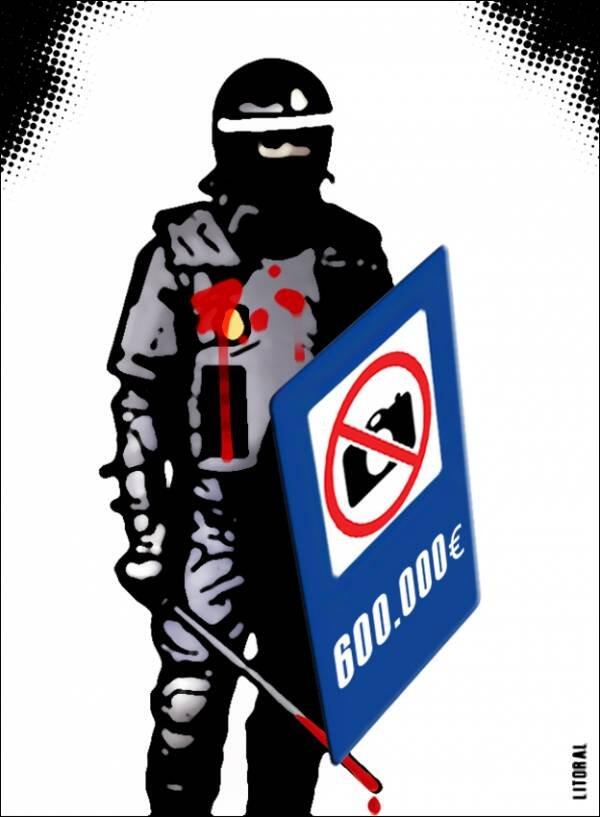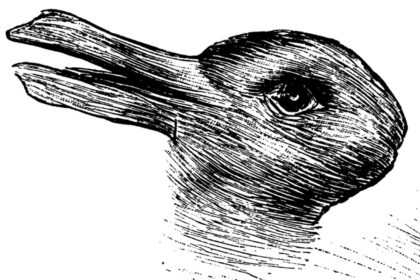Maritime Surrealism: A Forensic Image of Southern Europe in the Twenty-First Century
Carlos Garrido Castellano
As I was getting ready to leave Portugal and start a new academic job in Ireland in August 2018, a group of colleagues introduced me to Mieke Bal, who came to Lisbon to participate in a conference and organize an art installation at the Faculty of Letters of Lisbon University under the title of Precarity. Symbolically, my last role as part of the Faculty in Lisbon involved configuring the exhibition display of Bal’s Precarity. The installation’s title alludes to social malaise perceivable at economic, psychological and physical levels. Bal’s main concern in this work is with the capacity of capitalism to modulate affect, as opposed to straightforward economic interpretations of its effects. In a Deleuzian vein, the installation contains five screens that narrate the life of an adult woman whose tragic end is directly inspired by Madame Bovary. As in Flaubert’s classic novel, here social conditions are presented as an active force circumscribing the decisions and actions of the installation’s main character. Bal’s work also hypothesizes about the dangers of maintaining a distance from reality and lacking “commitment to the present, the world, and social reality.” Precarity emerges thus as a condensed state of artistic and political anticipation, one becoming multilayered and acquiring intensity as it is inserted into the space of the academy.
I arrived in Lisbon in May 2014. In view of the lack of opportunities within academia, many colleagues underwent a similar process of migration in those years. Two years before this, as the global economic crisis reached its peak, the General Secretary of Migration in Spain attempted to deal with the exodus of this army of precarious cultural workers, of which I was one, by saying that nowadays Spanish youngsters were migrating “because of their adventurous spirit.”[1] The day I arrived in Lisbon, I joined my new Portuguese colleagues in a labor strike against budget cuts.
Four years later, my brief participation in the display of Bal’s work took place at an interesting and paradoxical moment, one in which the official narrative about precarity in many Portuguese public universities was that of denial. Meanwhile, one of Portugal’s main journals published an open letter to the Dean of Lisbon University complaining about the lack of implementation of a law against precarity in the academy approved by the government. As we installed Bal’s project, a set of dates and events came to my mind. Using these as a point of reference I will attempt to track several interrelated processes: the deterioration of the public sphere in Southern Europe and beyond; the practical work of images and concepts; the way the politics of the spectacle is silencing long-term processes of violence and marginalization; the stubborn incapacity or lack of interest by Iberian territories in coming to terms with the consequences of their former imperial role; and the forensic capacity of the image to act as a background for alternative modes of civility.
Let’s begin in 2014. That year, one cinematic image attracted the attention of Spanish media and civil society. The short clip, which was quickly disseminated in television and social media, showed the Spanish Guardia Civil shooting rubber balls at a group of migrants who were attempting to swim up to the African town of Ceuta, which belongs to Spain. As a result of the attack, fifteen people drowned. The short video, captured by a witness, created awareness about the incoherence of the European policies of hospitality compared to violent episodes of exclusion and overt racism such as this. More than that, the video operated as evidence of the incoherent position of the right wing Spanish government towards migration and human rights. In fact, the Spanish authorities and the Minister of Internal Affairs himself offered up three alternative explanations negating the obvious truth that the images reveal without any doubt. On a more general level, the video acted as a forensic testimony to the loss of accountability of official narratives about the nation, revealing also its incapacity and unwillingness to cope with contemporary Mediterranean border reality and the coloniality linked to European exclusionary policies. Through their challenge to the narratives of truth and national identity constructed in response to the incident, videos and images such as these repurposed citizenship and solidarity as a productive process directly related to disaster capitalism.[2]


Returning to Lisbon in 2015, seventeen policemen were charged with torture and racial discrimination after brutalizing a group of youngsters from the Cova da Moura neighborhood, a “bairro” populated by Luso-Afro Portuguese residents. Months before the agents involved in the Cova da Moura incident were called to testify in the courts, the Portuguese President gave a speech on Gorée Island (Senegal). Gorée was one of the main slave trading posts of the Middle Passage. In such a symbolically-charged context the President stressed the role of Portugal in the abolition of slavery, reinforcing the idea that Portuguese colonialism represented a “softer” and more “humanist” version of imperial domination. During the same year, the idea of creating a “Museu das Descobertas” (Museum of the Discoveries) was proposed for Lisbon, resulting in increasing debates about the most appropriate name for the institution, as if this was the main issue at stake in the creation of an unapologetically colonialist museum concept.
In the midst of the economic crisis, then-Spanish Prime Minister Mariano Rajoy decided to put a brilliant end to his intervention in the negotiations of an economic bailout for Spanish banks by saying that “Spain is not Uganda.” Through this comparison, he attempted to demonstrate that the political and economic situation of Spain was not so bad. I heard that sentence several times while doing fieldwork in Uganda in 2016. After Mr. Rajoy made this comparison, Spain dropped several positions in the Corruption Perceptions Index, falling from a score of 65 in 2012 to 58 in 2015 and contradicting the image of superiority suggested by the Spanish Prime Minister. In the meantime, Uganda kept its score more or less stable. The interesting point of the comparison, in any case, was that it confirmed Jean and John Comaroff’s idea that “Euro-America is evolving towards Africa.”[3]

My main objective in doing fieldwork in Kampala was to understand how an anticolonial ethos was still alive in present-day forms of activist and socially engaged art. Those, I argue, constitute a partially unexplored ground from which it is possible to envisage art’s relevance in fueling social transformation and imagining new forms of civil agency. While I did not expect to encounter the domestic turbulence I left at home, the inadequacy of the comparison between Uganda and Spain, and its incapacity to grasp Spain’s provincialism, added an additional layer to my exploration of political art.
As I packed my library to move again in the Summer of 2018, I could not avoid thinking about how politics succeeds in normalizing processes of violence and control. At the same time, however, images responding to Iberian political surrealism proliferated. I imagined these as a revamped version of Frederic Jameson’s idea of postmodernism as “surrealism without the unconscious,” concerned with the region’s incapacity to redefine its position within a shifting international landscape. The exclusionary policies of both Spain and Portugal reveal that a new conceptualization of citizenship based on the open-ended condition of images and their “commitment to the present” is emerging in response. This visual imagination is gaining ground everywhere, even within the art world. In the face of such visual proliferation, it comes as no surprise that the scandal provoked by Santiago Sierra’s contribution to the 2018 edition of the ARCO art fair (obscured photographs of current political prisoners in Spain) was short-lived, and easily forgotten.
Carlos Garrido Castellano is Lecturer of Spanish, Portuguese and Latin American Studies at Cork University, Ireland. His research interests focus on critical theory, activism and collaborative artistic practices in postcolonial contexts. He authored two books on contemporary Caribbean art, and is now preparing a monograph on socially engaged art and coloniality.
Notes:
[1] https://politica.elpais.com/politica/2012/11/30/actualidad/1354286966_753467.html
[2] On the power of photographic images to deal with flawed forms of citizenship under disaster capitalism, see Ariella Azoulay, The Civil Contract of Photography (London: Zone Books, 2008.)
[3] Jean Comaroff and John Comaroff, Theory from the South: Or, How Euro-America Is Evolving Toward Africa. (New York: Routledge, 2016.)











